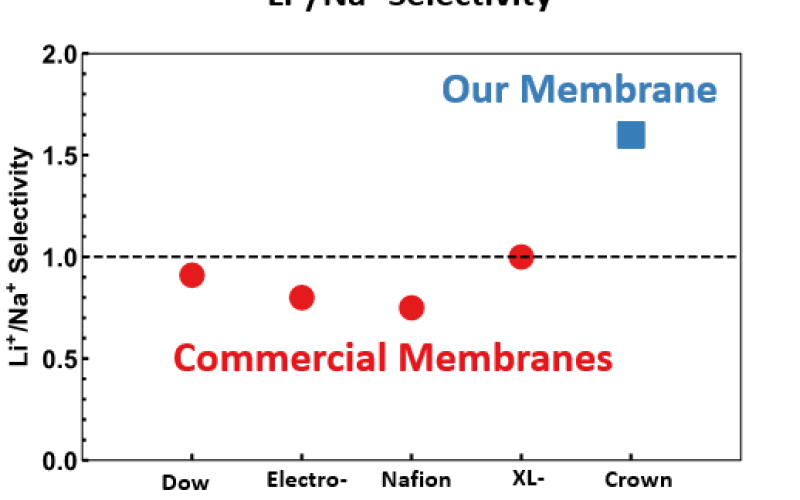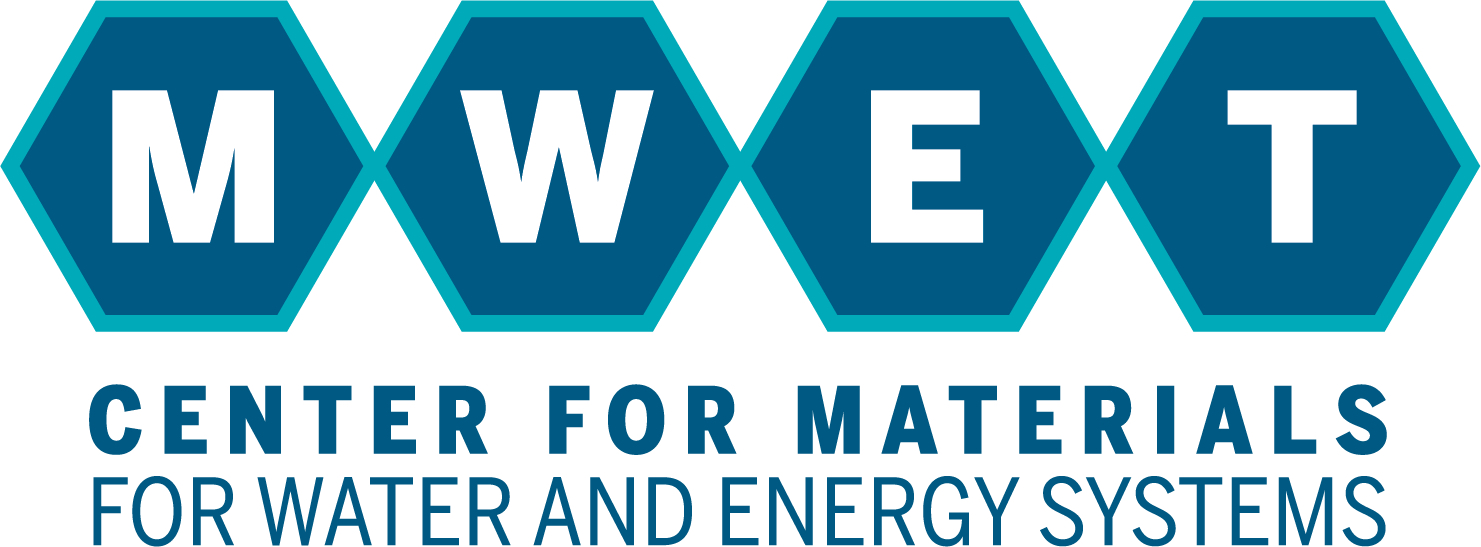
Scientific Achievement
Developed a tunable polymer platform using Ring Opening Metathesis Polymerization (ROMP) into which selective interactants are incorporated.
Images: Bottle brush membrane framework containing 12-Crown-4 ether moiety for selective recovery of Li ions.

Significance and Impact
The modular chemistry allows for incorporation of specific interactants targeting solutes of interest such as Li ions.
Research Details
- Water uptake of our platform membranes can be easily controlled and optimized by changing the amount of hydrophilic sites (PEG).
- Lithium uptake of > 10 mg per 1 g of membrane was achieved. Up to 70% of captured Li ions can be released from the membrane.
- Furthermore, permeability study of Na and Li ions showed that the permeability of Li+ is greater than Na+ for our membrane.
Developing highly selective polymeric membranes is crucial for advancing the efficacy of their use for water purification and resource recovery. However, the incorporation of specific interactants in polymers has been limited and their impact on molecular mechanisms for transport is poorly understood. Ultimately our goal is to create a robust synthetic platform to prepare selective membranes with versatile control over chemistry to target specific solutes of interest. Here we demonstrated the development of a bottlebrush membrane containing a ligand, 12-Crown-4 ether, which is known to selectively bind lithium ions. By varying the number of hydrophilic sites, we were able to prepare membranes with controlled water content. These materials adsorbed roughly 10 mg of lithium per 1 g of membrane and 70% of the captured lithium can be released when exposed to pure water. When ion permeability was tested, the crown ether incorporated membrane was selective for lithium over sodium, which is a reversal in the relative order of permeation of these ions in conventional membranes and indicates a change in transport mechanism. The robustness of these findings are being tested and a detailed ion transport study will be performed to elucidate the basis of this selectivity.
Work was performed at the University of California Santa Barbara and The University of Texas at Austin.

